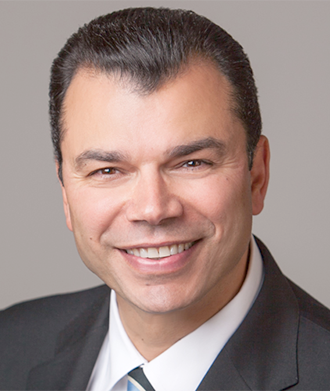3 Keys to a Successful Value-Based Care Implementation (original) (raw)
The goals of value-based care are clear — improved population health, increased patient satisfaction, and reduced cost — but the means of getting there aren’t. Healthcare organizations are grappling with the transition from service- to performance-based reimbursement with varying success. As it turns out, what comes easily for one organization isn’t guaranteed for another.
While each transition will be unique based on variation in personnel, infrastructure, finances, and partnerships, every successful one will have certain components in common: support for providers and care teams; commitment to long-term qualitative improvement; and alignment of internal and external goals.
Consistent with healthcare reforms generally, the challenge of making this fundamental shift in care delivery has more to do with human behavior and change management than the availability of specific resources and tools.
SUPPORT FOR PROVIDERS AND CARE TEAMS
A clear knock against the triple aim is that it overlooks the means for effecting these three outcomes. Provider workloads are already at capacity. Improving population health, increasing patient satisfaction, and reducing cost will fail to take hold without increased support for the providers who shoulder the lion’s share of responsibility for the transition to value-based care.
According to the head of Reliant Medical Group, success in value-based care begins with the recognition that the workload must be share.
“One of the things we know need to solve for and we have by no means have is getting away from one person needs to shoulder the burden entirely alone,” said Reliant President & CEO Tarek Elsawy, MD, FACP.
“Historically, we have been taught to manage everything from beginning to end ourselves,” he continued. “To this day most electronic health records are quite frankly still very sophisticated filing cabinets and have not really delivered on the promise of making the lives of providers better. Instead of concentrating holistically on the patient, they are almost in a competition to pay enough attention to the patient and the system pinging them with best practice alerts and all kinds of other things all the time.”

Reliant President & CEO Tarek Elsawy, MD, FACP
A team-based approach central to Reliant’s value-based care implementation.
“Our team-based model of care delivery is also going to have a significant impact on provider burnout and our early results show that we haven’t had anyone who has experienced the model said they prefer the old way and request to go back. That’s been incredibly reaffirming,” Elsawy explained.
As proof of his commitment to the team-based approach to value-based care, Elsawy has ensured that financial investment matches his verbal support. Over the past few years, Reliant has undergone a reconfiguration of its organization. The organization’s leadership has looked to both its staff and offices for opportunities to make its vision of a team-based practice a reality.
“What we’re doing is unusual — we’re making our facilities match the care model. Most people inherit a building and configure themselves around the facility,” said Elsawy. “We’re configuring the facilities on a model of team-based care of physicians, advanced practitioners, nurses, medical assistants, behavior health specialists, pharmacists, etc. all collocated. Patient-centered care? We are taking that literally where the patient is in the center of all of that.”
Roughly forty percent of the entire healthcare organization has undergone the change. The physical restructuring adheres to the overall vision for value-based care at Reliant.
“Value-based care is a complex concept, it but it boils down to the way that our patients or consumers can interact with our organization or any complex healthcare system in a fairly seamless way,” he said.
COMMITMENT TO LONG-TERM QUALITY IMPROVEMENT
As opposed to fee-for-service, value-based reimbursement ties payment to quality rather than quantity. Healthcare organizations are responsible for demonstrating quality improvement year over year. Clearly, these organizations will struggle to make improvements substantial enough progress if they fail to take a forward-looking view of quality measures.
With healthcare very much in the middle of the transition from quantity to quality, many organizations still find themselves in the earliest stages of quality measurement. But today’s decisions will have a lasting impact on tomorrow’s success or failure in showing increases in clinical efficacy. Providers must have a strategy for achieving gains throughout their participation in risk-based arrangements with payers over the duration of these contracts.
National Quality Forum Senior Director Jason Goldwater recommends the development of a quality measurement strategy that is both dynamic and longitudinal in nature so as to enable continued success in value-based care.

Jason Goldwater, Senior Director at National Quality Forum
“Not only should quality measurement give you information, but it should also show you the pathway for what you need to do to make corrections if necessary or to continue to be consistent in delivering quality and efficient care that will continually meet those measures,” Goldwater explained.
Quality measurement must do more than simply report out on provider performance based on certain criteria — it need also provide an internal purpose in identifying gaps in performance or a lack of data necessary for satisfying measures.
“That’s how you continue to evolve,” he continued. “It doesn’t come down to just choosing the measures you think are the most appropriate — it comes down to having the reliable data for these measures to give a better indication of quality.”
Eventually this close assessment of available provider performance data should pave the way for more advanced quality measures and the ability to succeed in value-based care.
“As you evolve, then the process becomes a question of examining the various data streams that you’ve got and understand not just the types of data but its impact on quality,” Goldwater added. “If you’re going to choose an advanced quality measure, then you have to be able to look at the data and determine that it ultimately shows differences in improvement over time.”
Healthcare organizations must ensure they possess the data necessary for reporting on performances as part of risk-based agreements with public and commercial payers. However, the availability of reliable data remains a persistent challenge for providers participating in value-based care models. Not surprisingly.
“All the measures in the world aren’t going to matter if you have horrible data,” Goldwater warned. “It’s not simply having the ability to report on a certain number of measures. The focus needs to be on where the data is coming from for these measures and how good that data is."
ALIGNMENT OF INTERNAL AND EXTERNAL GOALS
To achieve the ultimate goals of value-based care, healthcare organizations will need to assume greater responsibility for the patient’s experience across multiple care settings based on the appropriate level of acuity.
While the process to move away from the fragmentation associated with episodic, fee-for-service care will take some time, it is now requiring the attention of these organizations in the near term to identify areas where alignment and integration with other parts of the care continuum are possible to truly lower care costs and at the same time maintain a high level of care quality.
The continuity gap between acute and post-acute care providers represents an obvious opportunity and one leading organizations are already expending significant effort and resources to address.
“Post-acute is sometimes overlooked,” said Partners Continuing Care CIO John Campbell. "In part, that’s because not all acute hospitals are part of a fully integrated system like Partners HealthCare. All acute hospitals have to leverage post-acute services, but unless they are within the system, it’s not something these hospitals have direct control over or financial exposure to.”
Partners HealthCare made the bold decision to make post-acute care a vital component of its work in value-based care.

Partners Continuing Care CIO John Campbell
“Within Partners, we’re a critical part of the care continuum, especially the work that we are doing in accountable care, population health, and other alternative care models,” Campbell revealed.
“Alternative reimbursement models really put the emphasis on post-acute as a way to reduce cost,” Campbell continued. “We should be able to optimize the patient journey starting at the acute all the way back to home, hopefully being able to move the patient sooner in the process to lower-care, lower-cost settings while still being able to maintain the safety of the patient.”
Direct alignment of acute and post-acute care alignment at Partners is truly unique and still a work in progress despite the health system having total visibility across the care continuum.
“That’s the journey we’re on. I wouldn’t say we have it perfected by any means, but the fact that we’re all in a system is a huge asset for Partners and it’s allowing us to have conversations and do integration and even understand cost in ways that other systems will be challenged to do,” added Campbell.
According to Campbell, visibility into lower acuity settings is integral to plotting a successful path to value-based care moving forward.
“A previous attitude of ‘it’s over there and I don’t really have control over it, so I’m going to focus on things that I can control’ is not going to be sustainable,” he asserted. “Obviously, that will change with some of the alternative reimbursement models. Over time, these organizations will have to care about it more. Whether in- or out-of-network, post-acute care represents a huge part of the cost equation and warrants more attention and a focus on integrated delivery strategies.”
Ultimately, alignment of care settings of varying acuity will be essential to achieving the goals of value-based — efficient and effective healthcare.
“We should be able to optimize the patient journey starting at the acute all the way back to home, hopefully being able to move the patient sooner in the process to lower-care, lower-cost settings while still being able to maintain the safety of the patient,” said Campbell.
The alignment of care facilities and resources alone won’t be sufficient enough for value-based care to take hold and effect the types of lasting changes its various models propose. This commitment of tangible resources must accompany an investment organization-wide support in embracing a new culture of care. The case of Reliant Medical Group’s implementation of a team-based model is a perfect example.
“It’s tempting to say that value-based care is a primary care thing,” Elsawy maintained. “It’s not — it’s the whole organization. Unless you’re willing to say this is all of us, it becomes difficult to execute on that. If you think you’re going to flip a switch, that’s fairly erroneous. You have to manage both fee-for-service and value-based care, and the direction of the organization needs to be clear to everyone. Yes, we understand we are in a transition period, but we are not going back.”
Undoing years of learned behavior will prove to be a lingering challenge, especially for providers with decades of practice experience.
“Make no mistake: We still have some providers who like the way they’re practicing and aren’t all on board with team-based care,” Elsawy observed. “When you have been trained to do things one way and then all of the sudden it must evolve to include all these other team members, it’s a difficult change. But you have to let the data speak for itself and the data so far shows that every single provider that we put into the team-based care model, not one has wanted to go back.”
CONCLUSION
A community of stakeholders for supporting the implementation of value-based care and ensuring its success over the long run. With continued support for providers and care teams, firm commitment to long-term qualitative improvement, and true alignment of internal and external goals, the healthcare organizations have a chance to improve the quality and value of the care their providers deliver.